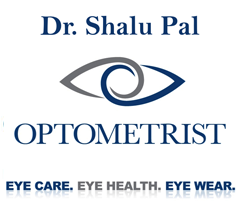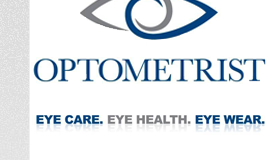Whenever the eyes are not aligned properly, the term strabismus applies. Pronounced "struh-biz-mus," people with this condition have been referred to in the past as "cross-eyed," "wall-eyed" or were said to have a "squint." These terms are all outdated and are no longer used by vision professionals, but people seeking information about the condition may see them mentioned.
Strabismus means that one eye is misaligned when compared to the other; while one eye fixates straight ahead at the visual target, the other does not, but instead turns inward, outward, up or down, when compared with the fellow eye.
It is estimated that about five percent of the general population may have some form of strabismus. It usually begins in infancy or early childhood, although it may occur later in life.
Adults who suddenly develop strabismus may have a serious illness such as high blood pressure, diabetes, thyroid disorders, or neurological disorders. Adult onset strabismus should always be considered as a warning sign and indicates that the patient should see his or her physician as soon as possible for a complete physical to determine the underlying cause. Double vision is one sign of a possible serious medical problem.
Most often, strabismus is diagnosed in early childhood and is noticed by parents first. There is a condition called pseudostrabismus, or "false strabismus," which can cause an infant's eyes to appear to be crossing, but which is only due to the skin over the nasal part of the eyes. It is quickly and easily diagnosed as such by an eyecare specialist, so parents should bring their children in for a comprehensive vision examination before the age of three.
Strabismus in young children can and definitely should be treated to prevent the decrease in vision known as amblyopia, which is the term used when vision does not develop properly. The earlier treatment begins the better.
Strabismus is classified according to the direction of eye misalignment and whether the misalignment is constant or intermittent, and if it always affects the same eye or if it alternates from one eye to the other. Treatment varies according to type and severity, and should take into account not only the vision but the cosmetic effect of the eye turn.
Classification and Diagnosis
Esotropia is the term used when one eye turns inward relative to the other. The fixating eye will always be aligned with the target of vision, while the esotropic eye may be constantly turned inward, or only under certain conditions. Esotropia is the most common type of strabismus.
There is a common belief that children will grow out of esotropia; this is absolutely not true, although it probably arises from parents falsely believing the child to be esotropic when the reality is pseudostrabismus, noted above. If a parent has any doubt at all, the easiest way to be certain is to bring the child in for examination by their optometrist.
Accommodative esotropia is caused by the child being more farsighted than usual, which requires more focusing, or accommodating, than would usually be needed. As the eyes focus, they naturally turn inward, or converge, in order to keep the person looking at the target with both eyes; in cases like these, too much farsightedness leads to too much focusing and that causes too much convergence, leading to accommodative esotropia. Most cases of accommodative esotropia are intermittent, meaning that once the fairsightedness is diagnosed and treated with eyewear, the amount of focusing needed is reduced and the eyes then align normally. It is one of the most easily treated types of strabismus.
Constant esotropia can be the result of abnormalities in the muscles that are responsible for eye movement, the nerve impulses that control those movements, or in the brain's ability to interpret them. When the two eyes are constantly aiming at two different places in space, the normal response of the brain is to interpret this as double vision, a situation it will avoid if at all possible. In infants and young children, the result is that the brain learns to adapt by ignoring or suppressing the vision from the turned eye, and can cause the vision in the affected eye to develop abnormally. This is called amblyopia, often referred to as "lazy eye." There is thought to be a period critical to normal vision development, from infancy up to about age seven or eight, and if the eyes are misaligned during this time, the vision may never be able to develop so that the eye never will see well, even though there is nothing medically wrong with it. In true amblyopia, it is extremely important to preserve the vision in the better eye.
Exotropia is the term used when one eye is turned outward relative to the fixating eye. It is less common for patients to develop amblyopia in exotropia, probably because it is more common for the misaligned eyes to alternate than to involve only one. When the eyes alternate, it is likely that vision will develop normally in each eye, although it may be very difficult for the patient to learn to use both eyes at once without experiencing double vision. However, it is easier to train the eyes to converge than it is to train them to diverge.
Hypertropia and cyclotropia are more uncommon than either eso- or exotropia. Hypertropia is where one eye fixates higher or lower than the other and rotational tropias describe eyes that have developed a difference in how the eyes are aligned from the horizontal plane. Both types of these are usually due to ocular muscle abnormalities, either acquired or congenital. There are four main ocular muscles controlling each eye, and an additional two which add rotational and horizontal movements; small abnormalities in either or both of these muscles can result in this specific type of misalignment.
A diagnosis describing strabismus will usually include the eye that is affected, whether it is constant or intermittent, and in which direction it is aiming. For example, a child may be diagnosed with constant left esotropia with or without associated amblyopia.
Strabismus can involve either or both eyes, and may be so slight as to be undetectable without special testing, or so large as to be obvious. It can be acquired, from accidental head injury, or from disease processes, or be congenital and run in families.
Treatment
Children should have their eyes and vision examined before their third birthday, even when the eyes appear to be perfectly aligned, because while strabismus cannot be prevented, its complications can be, with early diagnosis and intervention.
Treatment will vary according to the type and direction of the strabismus and the underlying cause, as in the case of accommodative esotropia, for example, when treatment may be as simple as merely prescribing the proper prescriptive eyewear and careful follow-up, or may involve some or all possible strategies in different combinations depending on the individual characteristics of each case.
Lens prescriptions, prisms, vision therapy exercises and patching an eye may be recommended. In children, it is especially important to prevent suppression and later amblyopia. Surgery may be indicated in some cases, especially where the misalignment is large, although it is important to note that some form of vision therapy will almost always be needed to maintain the alignment over time once surgery has been done.
The goal of any treatment plan for strabismus should be to improve visual function and restore normal, binocular vision. That said, however, it should be noted that many, many people function very well with only one eye, due either to disease or accidental trauma. It is not the preferred situation, but it is certainly far from fatal. People drive, perform their jobs, read and participate in their favorite sports, all without the use of two eyes. In cases like these, whether the loss of binocular vision is from strabismus or some other cause, it is very important to protect and preserve the vision in the remaining, or unaffected eye. Protective eyewear and annual vision exams will provide the best means of achieving this goal.





